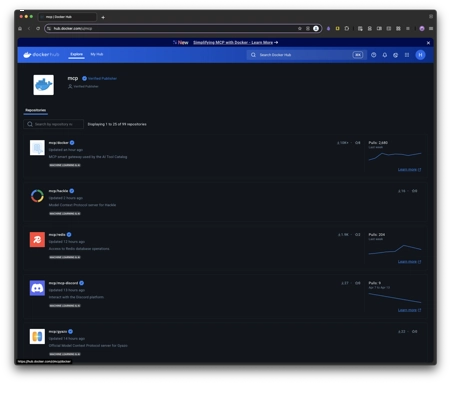Scoped Redux Stores per Component Instance (Truly Isolated State in React)
Redux is usually a singleton, meaning one giant store for the whole app. But what if you want fully isolated Redux stores — one per component instance? Maybe you're rendering independent widgets, dynamic tabs, or embedding apps inside apps. Here's how to create **scoped Redux stores** per component, without polluting the global app state. Why Scoped Redux Stores? Common use cases: Multiple instances of the same feature (e.g., chat rooms, dashboards) Micro-frontend components embedded independently Dynamic UIs where each "widget" needs clean, isolated state Step 1: Create a Store Factory Instead of a singleton store, make a factory that creates a store per use: // src/store/createScopedStore.js import { configureStore } from '@reduxjs/toolkit'; import { reducer } from './slices/scopedSlice'; export function createScopedStore() { return configureStore({ reducer, }); } Step 2: Create a Local Provider You can't use the global because it only works once. So, create a component that injects its own store dynamically: // src/components/ScopedStoreProvider.js import { Provider } from 'react-redux'; import { createScopedStore } from '../store/createScopedStore'; export function ScopedStoreProvider({ children }) { const store = createScopedStore(); return {children}; } Step 3: Build a Local Slice This slice will live only inside the scoped store: // src/store/slices/scopedSlice.js import { createSlice } from '@reduxjs/toolkit'; const scopedSlice = createSlice({ name: 'scoped', initialState: { count: 0 }, reducers: { increment(state) { state.count++; }, decrement(state) { state.count--; }, }, }); export const { increment, decrement } = scopedSlice.actions; export const reducer = scopedSlice.reducer; Step 4: Use It in a Component Each instance will have completely independent Redux state! // src/components/CounterWidget.js import { ScopedStoreProvider } from './ScopedStoreProvider'; import { useSelector, useDispatch } from 'react-redux'; import { increment, decrement } from '../store/slices/scopedSlice'; export function CounterWidget() { return ( ); } function InnerCounter() { const count = useSelector((state) => state.count); const dispatch = useDispatch(); return ( Scoped Counter: {count} dispatch(increment())}>+ dispatch(decrement())}>- ); } How It Works Every ScopedStoreProvider creates a brand new Redux store. The store is private to its subtree — no shared or conflicting state. Perfect for highly modular apps where components must stay isolated. Pros and Cons ✅ Pros Absolute isolation between instances No risk of state collisions Useful for embedding Redux components into third-party UIs ⚠️ Cons More memory usage (each store is a full Redux store) DevTools need extra configuration to track multiple stores Harder to share cross-instance state without lifting up

Redux is usually a singleton, meaning one giant store for the whole app. But what if you want fully isolated Redux stores — one per component instance? Maybe you're rendering independent widgets, dynamic tabs, or embedding apps inside apps. Here's how to create **scoped Redux stores** per component, without polluting the global app state.
Why Scoped Redux Stores?
Common use cases:
- Multiple instances of the same feature (e.g., chat rooms, dashboards)
- Micro-frontend components embedded independently
- Dynamic UIs where each "widget" needs clean, isolated state
Step 1: Create a Store Factory
Instead of a singleton store, make a factory that creates a store per use:
// src/store/createScopedStore.js
import { configureStore } from '@reduxjs/toolkit';
import { reducer } from './slices/scopedSlice';
export function createScopedStore() {
return configureStore({
reducer,
});
}
Step 2: Create a Local Provider
You can't use the global
// src/components/ScopedStoreProvider.js
import { Provider } from 'react-redux';
import { createScopedStore } from '../store/createScopedStore';
export function ScopedStoreProvider({ children }) {
const store = createScopedStore();
return {children} ;
}
Step 3: Build a Local Slice
This slice will live only inside the scoped store:
// src/store/slices/scopedSlice.js
import { createSlice } from '@reduxjs/toolkit';
const scopedSlice = createSlice({
name: 'scoped',
initialState: { count: 0 },
reducers: {
increment(state) {
state.count++;
},
decrement(state) {
state.count--;
},
},
});
export const { increment, decrement } = scopedSlice.actions;
export const reducer = scopedSlice.reducer;
Step 4: Use It in a Component
Each instance will have completely independent Redux state!
// src/components/CounterWidget.js
import { ScopedStoreProvider } from './ScopedStoreProvider';
import { useSelector, useDispatch } from 'react-redux';
import { increment, decrement } from '../store/slices/scopedSlice';
export function CounterWidget() {
return (
);
}
function InnerCounter() {
const count = useSelector((state) => state.count);
const dispatch = useDispatch();
return (
Scoped Counter: {count}
);
}
How It Works
- Every
ScopedStoreProvidercreates a brand new Redux store. - The store is private to its subtree — no shared or conflicting state.
- Perfect for highly modular apps where components must stay isolated.
Pros and Cons
✅ Pros
- Absolute isolation between instances
- No risk of state collisions
- Useful for embedding Redux components into third-party UIs
⚠️ Cons
- More memory usage (each store is a full Redux store)
- DevTools need extra configuration to track multiple stores
- Harder to share cross-instance state without lifting up
































































































































































![[The AI Show Episode 143]: ChatGPT Revenue Surge, New AGI Timelines, Amazon’s AI Agent, Claude for Education, Model Context Protocol & LLMs Pass the Turing Test](https://www.marketingaiinstitute.com/hubfs/ep%20143%20cover.png)






























































































































![[DEALS] Koofr Cloud Storage: Lifetime Subscription (1TB) (80% off) & Other Deals Up To 98% Off – Offers End Soon!](https://www.javacodegeeks.com/wp-content/uploads/2012/12/jcg-logo.jpg)
























![Is this too much for a modular monolith system? [closed]](https://i.sstatic.net/pYL1nsfg.png)




















































































































_roibu_Alamy.jpg?width=1280&auto=webp&quality=80&disable=upscale#)




 CISO’s Core Focus.webp?#)






































































































![M4 MacBook Air Drops to Just $849 - Act Fast! [Lowest Price Ever]](https://www.iclarified.com/images/news/97140/97140/97140-640.jpg)
![Apple Smart Glasses Not Close to Being Ready as Meta Targets 2025 [Gurman]](https://www.iclarified.com/images/news/97139/97139/97139-640.jpg)
![iPadOS 19 May Introduce Menu Bar, iOS 19 to Support External Displays [Rumor]](https://www.iclarified.com/images/news/97137/97137/97137-640.jpg)







































































































